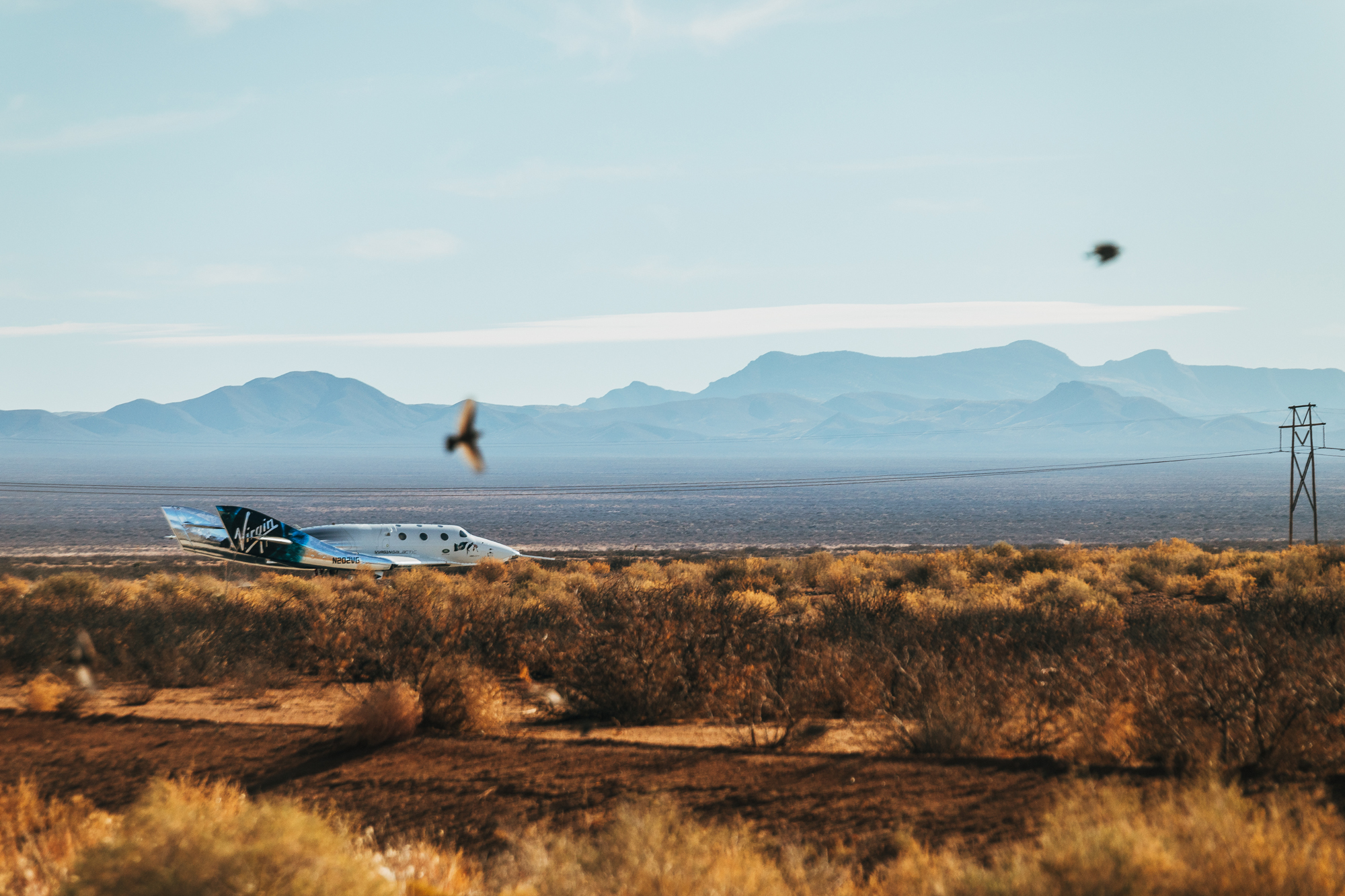
A bad computer connection foiled Virgin Galactic's attempt to reach space over the weekend, company officials said.
VSS Unity, Virgin Galactic's newest SpaceShipTwo vehicle, lifted off Saturday morning (Dec. 12) from New Mexico's Spaceport America beneath the wings of its carrier airplane, VMS Eve.
Unity's destination was suborbital space, but it didn't get there. Eve dropped Unity at an altitude of about 50,000 feet (15,000 meters) as planned, but the space plane's onboard rocket motor didn't light up properly, and pilots C.J. Sturckow and Dave Mackay brought Unity down for a premature but safe landing at Spaceport America.
Related: How Virgin Galactic's SpaceShipTwo works (infographic)
Virgin Galactic quickly diagnosed the issue. Post-flight analyses have revealed "that the onboard computer which monitors the propulsion system lost connection, triggering a fail-safe scenario that intentionally halted ignition of the rocket motor," Virgin Galactic representatives wrote in a blog post published Saturday. "This system, like others on the spaceship, is designed such that it defaults to a safe state whenever power or communication with sensors is lost."
The company will continue examining data from Saturday's test mission, then fly Unity again when the space plane is ready.
"We remain focused on the test-flight program we have previously announced, beginning with a repeat of this test flight, which included two pilots and NASA payloads," Virgin Galactic CEO Michael Colglazier said in the same statement.
Get the Space.com Newsletter
Breaking space news, the latest updates on rocket launches, skywatching events and more!
"This will be followed by another test flight which will include mission specialists in the cabin," he added. "And following that flight, we will have another test flight which will include our founder, Sir Richard Branson. We look forward to sharing information on our next flight window in the near future."
The six-passenger, two-pilot SpaceShipTwo is designed to take people and payloads to suborbital space and back. People who make this trip will experience a few minutes of weightlessness and see the curvature of Earth against the blackness of space. More than 600 people have booked a seat aboard the space plane, at a price, most recently, of $250,000 apiece, Virgin Galactic representatives have said.
Those customers cannot fly until VSS Unity finishes its test campaign. To date, that campaign has included two piloted missions to suborbital space, in December 2018 and February 2019. Both of those flights departed from the Mojave Air and Space Port in southeastern California, near the headquarters of The Spaceship Company, Virgin Galactic's manufacturing subsidiary.
Unity moved from Mojave to Spaceport America, Virgin Galactic's commercial hub, in February of this year. Saturday's mission was supposed to be Unity's first spaceflight from Spaceport America, and the first human spaceflight ever to depart from New Mexico.
Mike Wall is the author of "Out There" (Grand Central Publishing, 2018; illustrated by Karl Tate), a book about the search for alien life. Follow him on Twitter @michaeldwall. Follow us on Twitter @Spacedotcom or Facebook.
Join our Space Forums to keep talking space on the latest missions, night sky and more! And if you have a news tip, correction or comment, let us know at: community@space.com.

Michael Wall is a Senior Space Writer with Space.com and joined the team in 2010. He primarily covers exoplanets, spaceflight and military space, but has been known to dabble in the space art beat. His book about the search for alien life, "Out There," was published on Nov. 13, 2018. Before becoming a science writer, Michael worked as a herpetologist and wildlife biologist. He has a Ph.D. in evolutionary biology from the University of Sydney, Australia, a bachelor's degree from the University of Arizona, and a graduate certificate in science writing from the University of California, Santa Cruz. To find out what his latest project is, you can follow Michael on Twitter.
